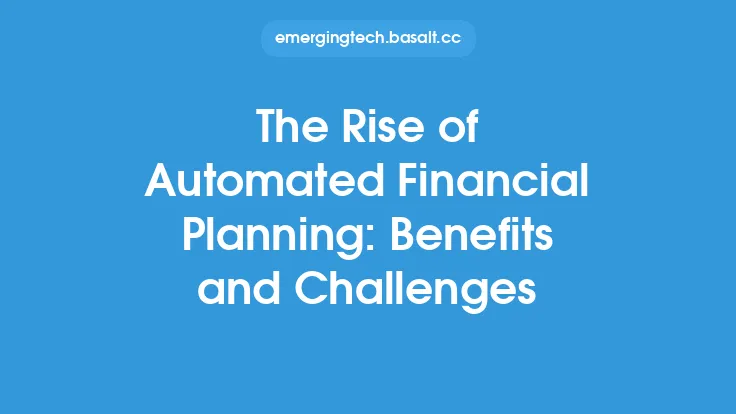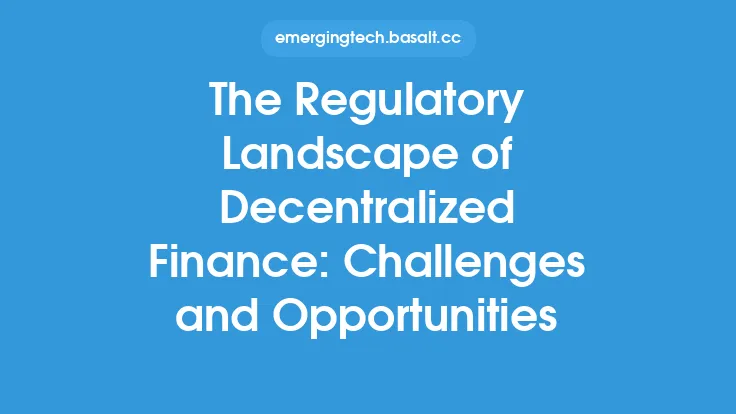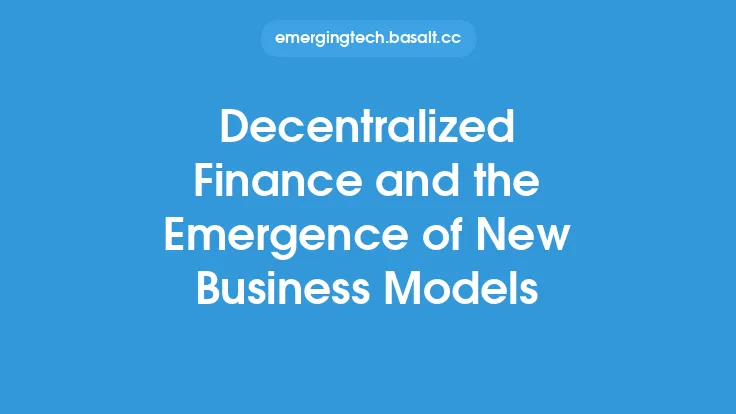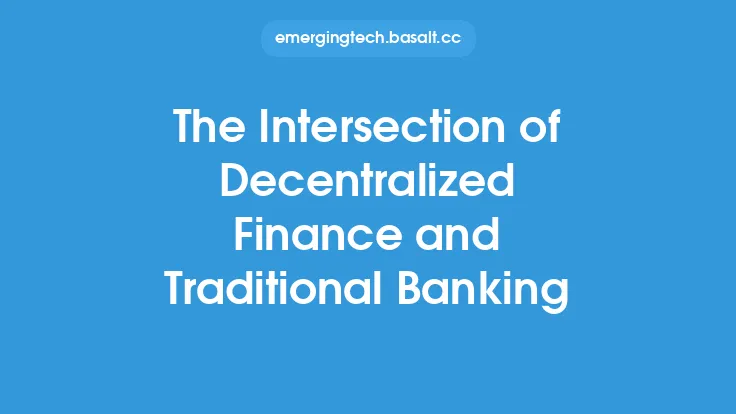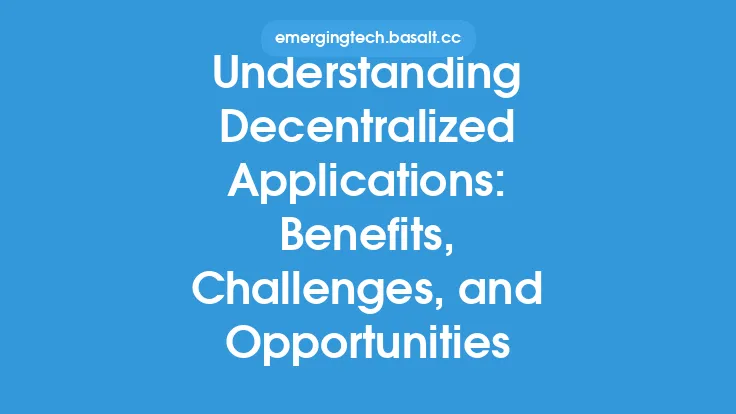The concept of decentralized exchanges, also known as DEXs, has been gaining significant attention in recent years due to their potential to revolutionize the way we trade and interact with financial assets. Unlike traditional centralized exchanges, DEXs operate on blockchain technology, allowing for peer-to-peer transactions without the need for intermediaries. This fundamental shift in the exchange paradigm has given rise to a new wave of innovation in the financial sector, with DEXs offering a range of benefits and posing unique challenges.
Introduction to Decentralized Exchanges
Decentralized exchanges are built on blockchain networks, utilizing smart contracts to facilitate transactions between buyers and sellers. This decentralized architecture enables DEXs to operate without a central authority, reducing the risk of censorship, hacking, and other security threats associated with traditional exchanges. By leveraging blockchain technology, DEXs can provide a more secure, transparent, and efficient trading experience for users. Furthermore, DEXs often support a wide range of assets, including cryptocurrencies, tokens, and other digital assets, making them an attractive option for traders and investors.
Benefits of Decentralized Exchanges
One of the primary benefits of DEXs is their ability to provide users with full control over their assets. Unlike traditional exchanges, which often require users to deposit their assets into a centralized wallet, DEXs enable users to trade directly from their own wallets. This reduces the risk of asset loss due to exchange hacks or other security breaches. Additionally, DEXs often offer faster transaction processing times, lower fees, and increased liquidity, making them an attractive option for traders. The decentralized nature of DEXs also promotes transparency, with all transactions being recorded on a public blockchain, allowing users to track their transactions and assets in real-time.
Challenges Facing Decentralized Exchanges
Despite the benefits offered by DEXs, there are several challenges that need to be addressed. One of the primary challenges facing DEXs is scalability. Currently, many DEXs are built on blockchain networks that are not optimized for high-volume trading, resulting in slow transaction processing times and high fees. Furthermore, the lack of regulation and oversight in the DEX space can make it difficult for users to navigate, with some DEXs being used for illicit activities such as money laundering. The user interface and experience of DEXs can also be complex and intimidating for new users, making it difficult for them to navigate and use the platform.
Decentralized Exchange Protocols
Several decentralized exchange protocols have emerged in recent years, each with its own unique features and benefits. Some of the most popular DEX protocols include Uniswap, SushiSwap, and Curve. These protocols utilize automated market maker (AMM) models, which enable liquidity providers to supply assets to a pool, allowing traders to buy and sell assets in a trustless and permissionless manner. Other protocols, such as Kyber Network and Balancer, utilize more complex models, incorporating multiple liquidity sources and advanced trading features. The development of these protocols has played a crucial role in the growth and adoption of DEXs, providing users with a range of options and features to suit their trading needs.
Security and Risks Associated with Decentralized Exchanges
While DEXs offer a range of benefits, including increased security and transparency, there are still several risks associated with using these platforms. One of the primary risks is smart contract risk, with the potential for bugs or vulnerabilities in the smart contract code to result in asset loss or other security breaches. Additionally, the use of oracles, which provide external data to smart contracts, can also pose a risk, with the potential for oracle manipulation or other forms of exploitation. Users should also be aware of the risks associated with liquidity provider tokens, which can be used to farm yields or other rewards, but also come with the risk of impermanent loss.
The Future of Decentralized Exchanges
Despite the challenges and risks associated with DEXs, the future of these platforms looks promising. As blockchain technology continues to evolve and improve, we can expect to see increased scalability, security, and usability in the DEX space. The development of new protocols and features, such as layer 2 scaling solutions and advanced trading features, will also play a crucial role in the growth and adoption of DEXs. Furthermore, the increasing demand for decentralized financial services, including lending, borrowing, and trading, will continue to drive innovation and investment in the DEX space. As the decentralized finance (DeFi) ecosystem continues to grow and mature, we can expect to see DEXs play an increasingly important role in the future of finance.
Conclusion
In conclusion, decentralized exchanges have the potential to revolutionize the way we trade and interact with financial assets. By providing a secure, transparent, and efficient trading experience, DEXs are poised to play a major role in the future of finance. While there are still several challenges and risks associated with using these platforms, the benefits of DEXs, including increased security, transparency, and control, make them an attractive option for traders and investors. As the DEX space continues to evolve and mature, we can expect to see increased innovation, investment, and adoption, driving the growth and development of these platforms.
